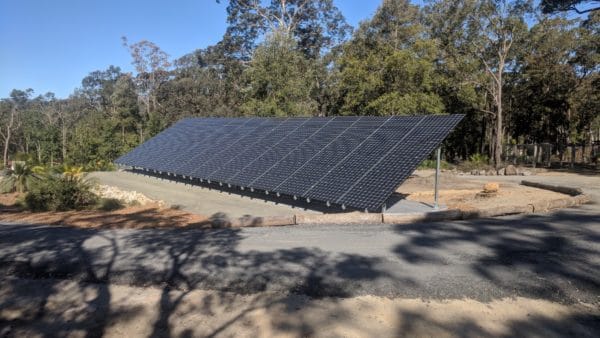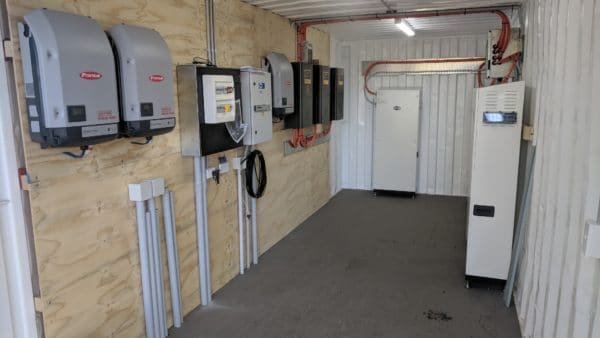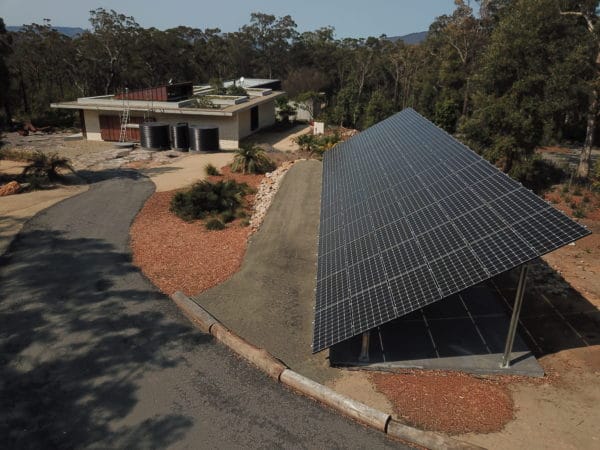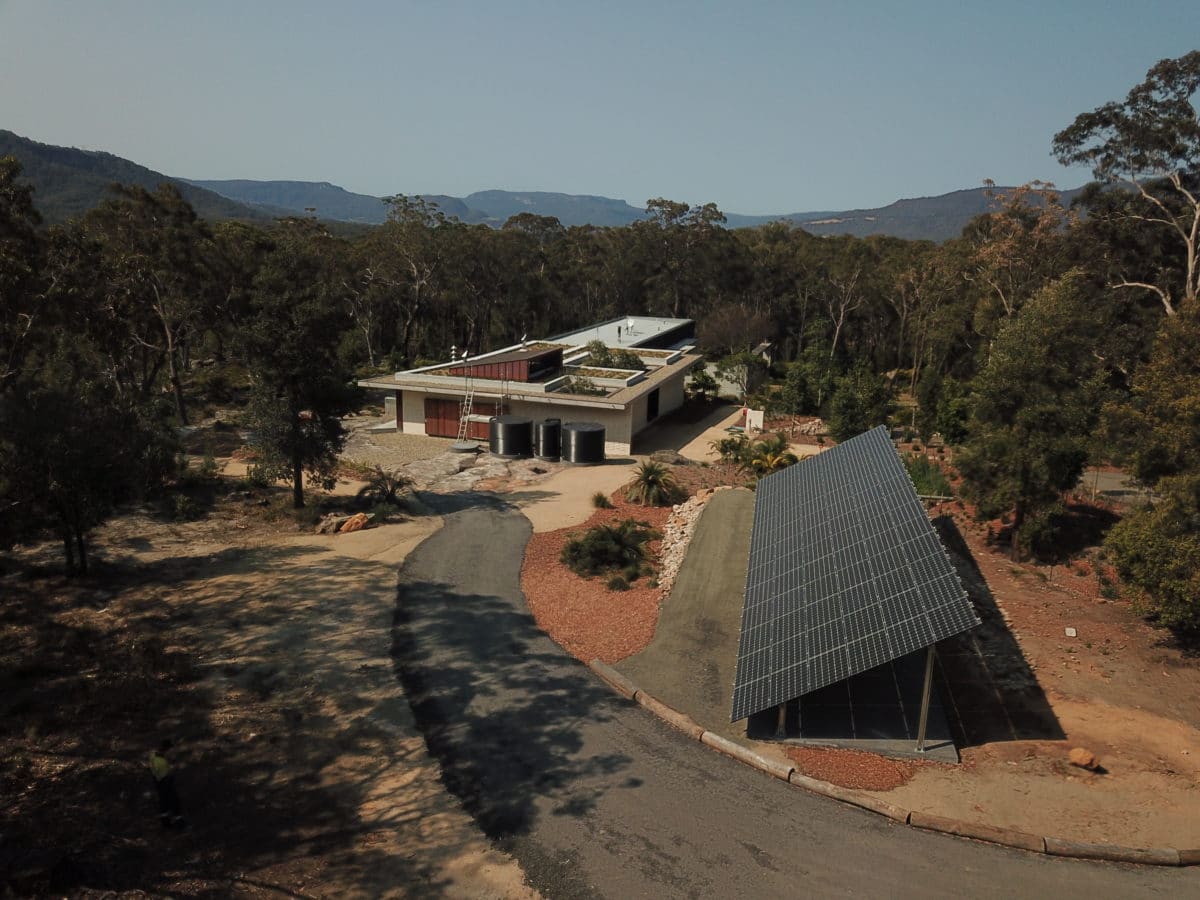A few days into the new year, the Currowan fire, which had been burning since November, changed course and began hurdling itself towards the Kangaroo Valley, two hours south of Sydney.
In 46°C, Nick Turner and his brother prepared, clearing debris and stacking hebel bricks around the plastic power turret which housed the cabling for the off-grid system, attempting to fortify the property against the oncoming cyclonic firestorm.
One hundred and forty kilometres away in his Bexley home office, Roland Lawrence watched anxiously on, monitoring the system his company had installed two years prior through its Selectronic inverters. “I’d been up just watching the system, seeing what it was doing,” Lawrence told pv magazine Australia. “I’d been watching that fire since mid-December because of the high density of customers we have down there.”
Anxious and awake, the thought ‘what if it’s a failure and it’s your fault’ played on Lawrence’s mind. “What would I have done if Nick had of called me in the middle of all that and said, ‘hey we just lost power?’”

Roland Lawrence
After midnight, he did get a call – but a welcome one. Turner was safe, the house survived – a lone structure in what had transformed overnight from a dense bushland to a blackened, bald ridge. “Everything was vaporised,” Lawrence recalls Turner telling him.
What saved Turner’s house was its carefully designed ‘halo’ watering system which covered the home with an umbrella of water, powered entirely by the off-grid system, including of 26 kW solar + 51 kWh battery system.
Built in 2018, Turner, who is one of Australia’s leading architects, designed his property to be bushfire resilient from the get-go. Anticipating that power would be the first thing to go in an emergency, which proved correct, Lawrence installed arrays of LG solar panels connected to Fronius inverters, coupled with a BYD 51 kWh battery and Selectronic battery inverters. Described as a robust, capable system by Lawrence, the installer noted Turner absolutely didn’t scrimp. “It’s a proper solution and that’s why it lasted,” Lawrence said.

Roland Lawrence
Visiting Turner’s property a month or two after the fires hit, Lawrence said he was “overwhelmed” by the sheer devastation. “When you’re standing under 10 metre tall trees that are completely incinerated, that’s when it hits home just how destructive those fires were.”
The experience has only solidified Lawrence’s attitude towards using premium products, tried and tested in Australian conditions, he said. What is at stake has this year become terrifyingly clear. “I wouldn’t call what we saw at the start of the year ‘Australian conditions’ but it’s certainly starting to look like it might become that…”
The importance of decentralised electricity systems like off-grid systems and microgrids are becoming increasingly apparent, especially in rural, fire-prone areas. Tabled earlier this month, the Royal Commission into the bushfires amplified recommendations made in the Climate Council’s Australian Bushfire and Climate Plan, which calls for extended rebate schemes for solar and battery systems as well as investment in decentralised electricity infrastructure.
“Centralised infrastructure, including power systems, can be disrupted during disasters, leaving communities in greater danger. Decentralised systems including microgrids based on solar and batteries can help ensure that communities have a secure and reliable source of power,” Climate Council researcher, Simon Bradshaw, told pv magazine Australia.

Roland Lawrence
This was certainly the case for Nick Turner, whose system not only saved him, his family and his neighbours that night, but also provided electricity to his property in the months of clean up which followed the fires while the traditional network was being repaired. Without any assistance from the RFS, who later told him they’d expected to find nine bodies at the property, energy security for Turner, like many other Australians living in regional area, has taken on a far more profound meaning.
Since this year’s Black Summer, Lawrence has noticed a concerted shift in Australian’s attitudes towards decentralised solar + battery systems. “As a direct, measurable result of the bushfires at the start of the year, we’ve had a pretty remarkable increase in enquires into batteries,” he said. “We done more battery jobs this year than we have pretty much total battery jobs ever.”
This content is protected by copyright and may not be reused. If you want to cooperate with us and would like to reuse some of our content, please contact: editors@pv-magazine.com.









By submitting this form you agree to pv magazine using your data for the purposes of publishing your comment.
Your personal data will only be disclosed or otherwise transmitted to third parties for the purposes of spam filtering or if this is necessary for technical maintenance of the website. Any other transfer to third parties will not take place unless this is justified on the basis of applicable data protection regulations or if pv magazine is legally obliged to do so.
You may revoke this consent at any time with effect for the future, in which case your personal data will be deleted immediately. Otherwise, your data will be deleted if pv magazine has processed your request or the purpose of data storage is fulfilled.
Further information on data privacy can be found in our Data Protection Policy.